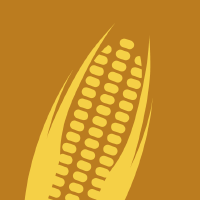Topic Menu
► Topic MenuTopic Editors



Bioactives and Ingredients from Agri-Food Wastes
Topic Information
Dear Colleagues,
The increasing production of agri-food waste is becoming a major environmental issue. The search for new functional compounds through the reuse of bio-wastes is increasingly important for humanity; these bio-wastes are often discarded due to a lack of knowledge regarding their possible use/beneficial properties for human beings. In this sense, the sustainable utilization of agri-food wastes and by-products for producing value-added products provides an opportunity for cosmetic, pharmaceutical or food industrial applications. Bioactive ingredients provide some physiological benefits, which direct the industry to focus its research on products of this nature. On the other hand, the paradigm of a circular economy encourages waste exploitation in order to reduce waste disposal and increase the resilience of the agri-food system. This Topic on “Bioactives and Ingredients from Agri-Food Wastes” intends to present innovative solutions to add value to agri-food wastes and by-products with a focus on natural bioactive compounds and provide novel examples of innovative applications. Agri-food waste valorization, green process optimization, the extraction/purification/encapsulation of compounds of interests from agri-food waste and applications of the compounds obtained from agri-food waste are the main topics of this Topic. Therefore, we cordially invite authors to contribute original research articles and reviews.
Prof. Dr. Vito Michele Paradiso
Dr. Ângela Fernandes
Dr. Marta Igual Ramo
Topic Editors
Keywords
- agri-food waste
- waste valorization
- bioactive ingredients
- extraction/purification/encapsulation
- innovative applications
- circular economy
Participating Journals
| Journal Name | Impact Factor | CiteScore | Launched Year | First Decision (median) | APC |
|---|---|---|---|---|---|

Agronomy
|
3.7 | 5.2 | 2011 | 15.8 Days | CHF 2600 |

Foods
|
5.2 | 5.8 | 2012 | 13.1 Days | CHF 2900 |

Molecules
|
4.6 | 6.7 | 1996 | 14.6 Days | CHF 2700 |

Sustainability
|
3.9 | 5.8 | 2009 | 18.8 Days | CHF 2400 |

Crops
|
- | - | 2021 | 30.5 Days | CHF 1000 |

MDPI Topics is cooperating with Preprints.org and has built a direct connection between MDPI journals and Preprints.org. Authors are encouraged to enjoy the benefits by posting a preprint at Preprints.org prior to publication:
- Immediately share your ideas ahead of publication and establish your research priority;
- Protect your idea from being stolen with this time-stamped preprint article;
- Enhance the exposure and impact of your research;
- Receive feedback from your peers in advance;
- Have it indexed in Web of Science (Preprint Citation Index), Google Scholar, Crossref, SHARE, PrePubMed, Scilit and Europe PMC.

